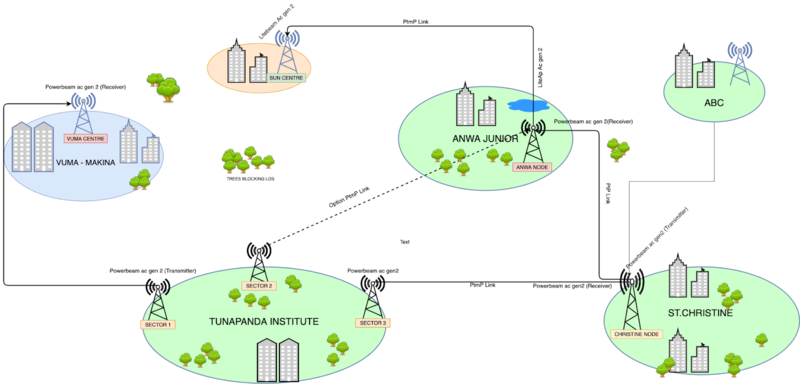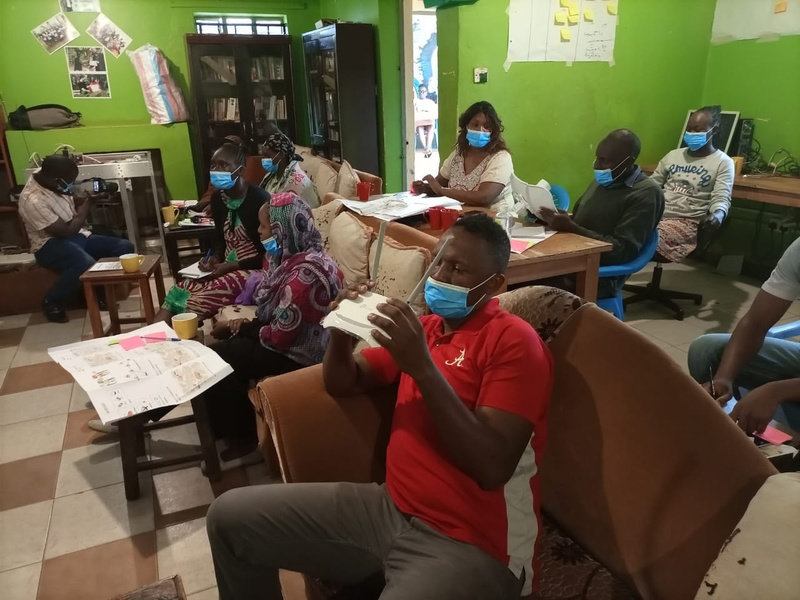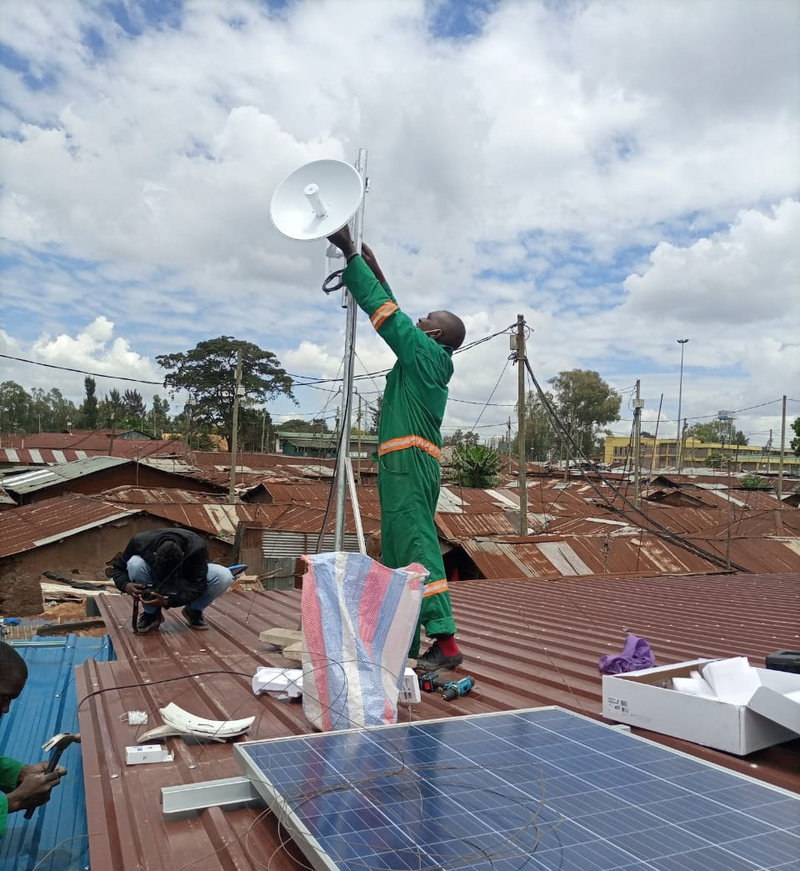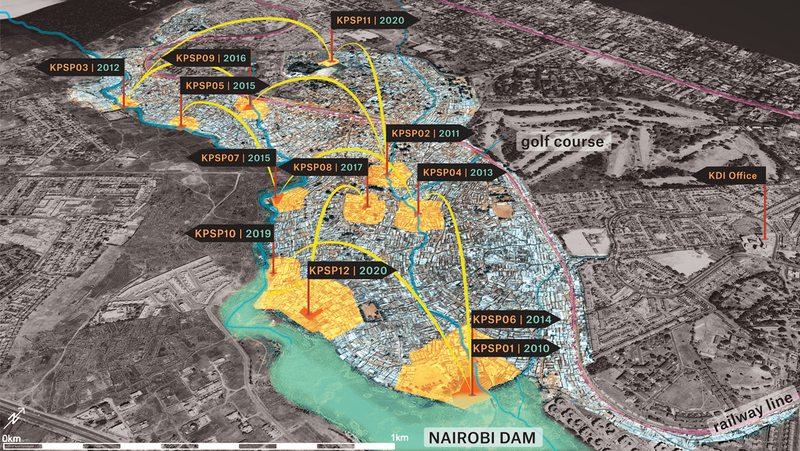Kibera Productive Public Space Internet Network (KPSPIN) committee and trainers after the pre-installation training.
Community Data Meeting with KPSPIN committee at Anwa Junior Academy
Simplified representation of the Kibera Productive Public Space Internet Network (KPSPIN) illustrating the interconnection of the four KPSP sites selected for the pilot phase of the Living Data Hubs project
Kibera Productive Public Space Internet Network (KPSPIN) committee and trainers after the pre-installation training.
Community Data Meeting with KPSPIN committee at Anwa Junior Academy



